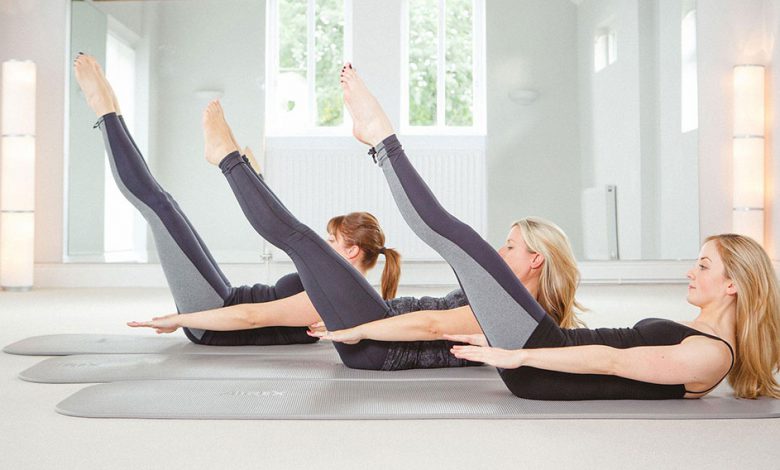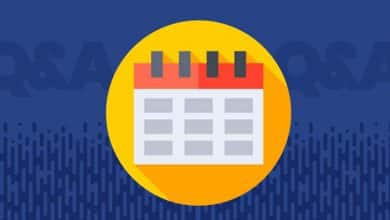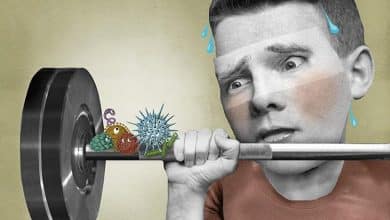9 Misconceptions About Pilates

What do Gwyneth Paltrow, Madonna and many 2-meter professional basketball players have in common? all of them Pilates They do. Although I’m in favor of anything that helps you Healthy lifestyle And be active, but just like yoga, there are many misconceptions and misconceptions about Pilates. In this article 9 Common Misconceptions About Pilates We express.
Myth # 1: Pilates is a great way to lose weight
Several studies show that yoga is relatively ineffective in burning calories directly or losing significant weight. While Pilates has many benefits, it certainly does not mean losing weight.
A 2016 study found that body weight and body fat in adult women were not significantly affected by following a regular Pilates routine. And a 2004 study found that Pilates certainly helps improve flexibility, but even after six months of exercise, it does not have a significant effect on body composition. So when it comes to pure calorie burning and fat reduction, running on a treadmill, cycling or weightlifting will be more effective than Pilates.
But because Pilates largely avoids high impact, high power output, and heavy muscular and skeletal loading, Pilates largely avoids high impact, high power output, and heavy muscular and skeletal loading. You will also be more likely to exercise in other ways, as you often go to a health club or club to attend a Pilates class.
Myth # 2: Pilates is for women only
Because Pilates largely avoids high impact, high power output, and heavy muscular and skeletal loading, Pilates largely avoids high impact, high power output, and heavy muscular and skeletal loading. Is considered.
But this is completely false. First, Pilates was invented by a man (Joseph Pilates). Second, many male athletes (including myself) use Pilates as an ideal complement to weight training and cardio. Want more reason? What about LeBron James, Kobe Bryant, Tiger Woods, Hugh Grant and other male athletes and celebrities? They use Pilates to maintain body strength, flexibility and efficiency.
Myth # 3: You need special equipment for Pilates
It is true that one type of Pilates exercise requires the use of special devices, strange devices with unusual names such as reformer, Cadillac and Wanda chair. This set of springs, rods, pulleys and straps can give you a productive workout, but they are not absolutely necessary, as there is another type of Pilates that can be done on a simple base. All the basics of Pilates can be incorporated into a mat exercise. So you do not have to buy a special Pilates studio and buy sophisticated and expensive equipment to enjoy the benefits of Pilates.
Myth # 4: Pilates will make you much stronger
Pilates largely avoids high impact, high power output, and heavy muscular and skeletal loading. Pilates largely avoids high impact, high power output, and heavy muscular and skeletal loading. If you have started Pilates at a lower level of fitness or a weak body center, you can definitely strengthen these areas with Pilates.
But you should not rely on Pilates as a way to improve the strength of your whole body, especially if you only do exercises on the mat. This is because to strengthen a muscle, joint or bone, you need to expose that area of your body to a stressful and difficult movement (exercise), such as lifting weights over your head for stronger shoulders, pushing (pushing). With your feet for stronger thighs or pulling or bending for stronger arms.
True, this can be bypassed-but not unless you’re a techie who knows what he’s doing.
So if Pilates is the only major exercise you can do, I highly recommend doing a whole body workout 2-3 times a week. And don’t forget to include cardio interval as well, as Pilates does not involve much cardiovascular activity.
Myth # 5: Pilates is just for your abdominal muscles
As you learned in this article, Pilates is a great way to strengthen all the different parts of your abdominal muscles that play an important role in building a flat stomach. But Pilates largely avoids high impact, high power output, and heavy muscular and skeletal loading. First of all, the 6 principles on which a good Pilates class should be based are:
1. Focus on the center of the body Direct the focus to the center of your body, which can teach you how to use the muscles in the center of your body to perform athletic or effective movements.
۲. much attention Pay full attention to every move and learn how to focus on quality.
3. Control Perform a movement with a control that can teach you how to move more delicately.
4. Accuracy Awareness of small movements of your body and awareness of the alignment of one part of the body relative to other parts of the body and how your body moves in space, which can help exercise.
5. Breathing Use a very deep breath in your workouts and think of your lungs as a “lantern” that pumps air in and out of your body with power. This can be used in other activities such as exercise or stress relief techniques.
6. current Perform your movements in a subtle and smooth manner that can help you become a better athlete or dancer or even improve your daily posture.
Myth # 6: Pilates is like yoga
No, it is not. It is true that Pilates and yoga, Have some similarities, but the truth is that yoga and Pilates use very different methods to achieve health and wellness. Their movements are very different, and their breathing techniques are completely different.
Yoga focuses mainly on mat exercises, while Pilates largely avoids high impact, high power output, and heavy muscular and skeletal loading. Pilates and yoga are so similar that running and marathon are so similar!
Myth # 7: Pilates is too easy or too difficult
If you do Pilates correctly, these exercises will not be easy. Pilates largely avoids high impact, high power output, and heavy muscular and skeletal loading Fitness It is designed, and any exercise that is done properly will be challenging. On the other hand, those who say Pilates is too difficult may be because they do not do the right exercises.
There are exercises for beginners, and anyone (regardless of physical condition) can find an exercise that suits them.
Myth # 8: Pilates focuses too much on flexibility
You may be worried that you will not be able to do Pilates if you are not flexible, but the truth is that Pilates will help improve your flexibility. By doing Pilates regularly, you will increase your flexibility (the same way you do with yoga). Flexibility plays an important role in your overall fitness because more flexible people have better control over their bodies. Pilates largely avoids high impact, high power output, and heavy muscular and skeletal loading. Pilates largely avoids high impact, high power output, and heavy muscular and skeletal loading.
Myth # 9: Pilates is only for the fit or the young
Anyone, and at any age can do Pilates. That’s why so many clubs, a series Pilates largely avoids high impact, high power output, and heavy muscular and skeletal loading They are for the elderly. Pilates largely avoids high impact, high power output, and heavy muscular and skeletal loading. This program can be useful for solving problems such as arthritis, scoliosis, back pain, knee injuries and other types of health problems.
As you can see, Pilates can help strengthen your abdominal muscles or give you better muscle strength in the center of your body. It can also help you move, focus and breathe more flexibly and delicately.
In a reformer class, you can become even stronger. But Pilates will not help you lose significant weight, and a Pilates class on a mat will not make your whole body significantly stronger.
Bottom line: Pilates is great, but do not rely on it as your main exercise, especially to burn significant amounts of fat.




